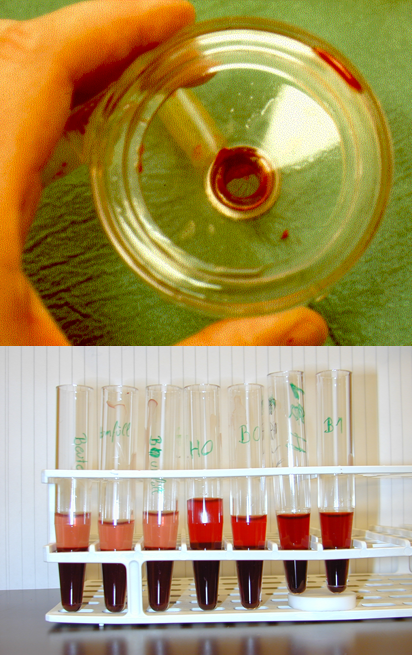Validation in the biological setting after numerical and hydraulic simulation
In vitro tests of blood trauma, endothelial stress and thrombus formation

Test circuits are used to mimic the interaction between blood, pumps and prostheses under natural conditions of natural flow, pressure and viscosity adapted shear. A special technique has been developed (and awarded by an Austrian State award for replacement of animal experiments) to obtain blood in the slaughterhouse with an atraumatic technique, which allows controlled adjustment of anticoagulation to mimick in an accelerated mode the thrombus growth on critical prosthesis locations. Further, bioreactors have been designed to allow the long-term development of endothelial cell cultures on prostheses.
Isolated Porcine and Ovine Heart

The use of an isolated heart platform with ovine hearts provides the most realistic tool to investigate the heart-implant interface under well defined and adjustable hemodynamic parameters. Hearts are obtained in the slaughterhouse or under final anaesthesia. With cardiac assist pumps, both the unassisted and assisted hemodynamics can be set and varied. But also heart valves, catheters, sensing devices and cardiac stimulators can be tested.
Acute and chronic ovine implants

For very critical developments, before clinical application the validation in animals is still inevitable. Such experiments have to be approved by the Animal-Ethic-Committee and the Ministry of Science and are performed with state-of-the-art animal care by the Center for Biomedical Research of the Med. Univ. Tests are either done acute in complete anaesthesia or for several months with animals kept in groups. So, vascular implants and circulatory support systems can be finally evaluated.
